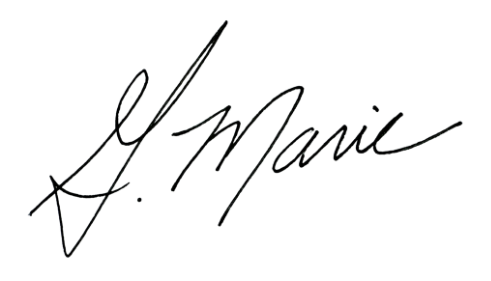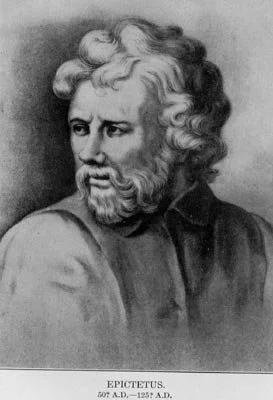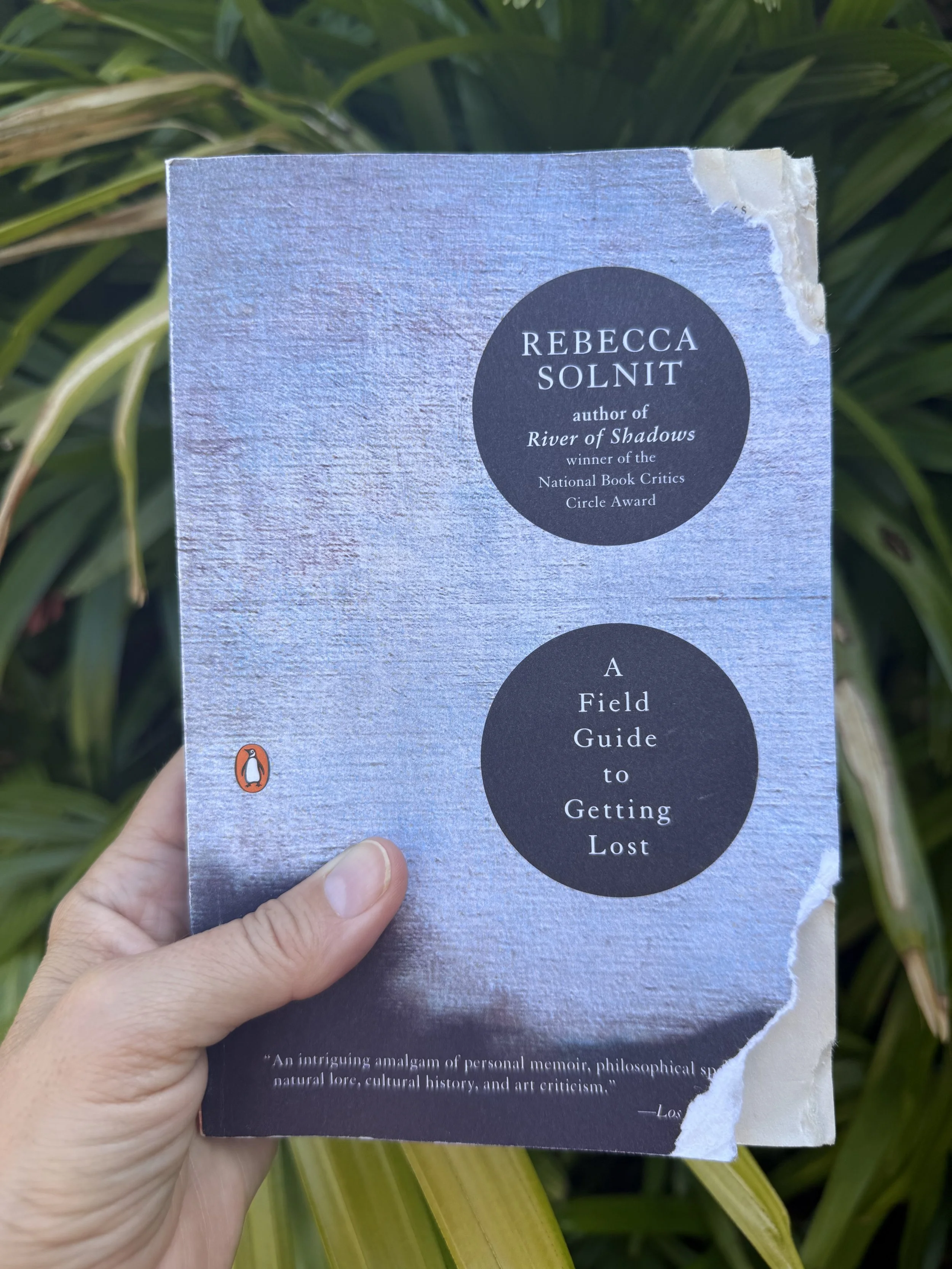Cultivating presence starts with inner simplicity
“In the short term, distractions can keep us from doing the things we want to do. In the longer term, however, they can accumulate and keep us from living the lives we want to live…”
- Jenny Odell in “How to Do Nothing”
The other day, I ate lunch at a quiet restaurant. The only noises were kitchen sounds and other customers talking to one another. Since music is playing in nearly every public space, this made an impression (as did the pad thai). Agreeable pop hits are even streaming through parking decks nowadays, not to mention the TVs in waiting rooms and airline terminals. And if that’s not enough, our phones are always at the ready with real-time anything.
Of course, it is all more than enough. I could Google “average media consumption daily” to quantify how bombarded we are with information today, but I won’t because this is old news. Shortly after 50 AD, the philosopher Epictetus complained about information overload, too. It makes you wonder if even our very distant ancestors also felt like they needed a way to unplug from hunting and gathering.
This is Epectitus
He had great hair, no?
We allow the bombardment to a great degree. Epictetus chose to live differently and kickstarted Stoicism. Through Artful Living, we choose what deserves our attention and release what doesn't. We filter. This is not about escaping modern life, but about engaging with it intentionally.
Filtering is key to being present and, therefore, key to Artful Living. I call this practice internal simplification — a deeper form of minimalism that goes beyond the physical decluttering that's become so popular. You've encountered external approaches like capsule wardrobes, Marie Kondo's methods, or #vanlife. While these can create helpful conditions for presence, they are insufficient. True internal simplification is about choosing to pay attention only to what supports your values and goals, making space in your mind for what matters most.
This isn’t easy, not because the “doing” of simplification is difficult, but because deciding what matters is. You cannot filter out what you don’t want until you know what you do want and why.
Pay attention to what you value
Sharon Lebell's interpretation of Epictetus in The Art of Living offers this kick in the pants: "You become what you give your attention to." If we don't choose what we expose ourselves to, someone else will “and their motives may not be the highest.”
Let’s stay here for a second because this is important. No matter what type of content it serves, your digital platform of choice is not motivated by the development of your well-being but the consistency of your attention. The goal is profit-making, not meaning-making. Even if the content is helpful, the aim is to make it easy for you to consume more than you need to as often as possible. And that’s not all; it gets worse.
The immediacy of it — and especially social media’s default mode of everything-is-always-a-crisis — results in what Jenny Odell calls “the fearful present.” In her book How to Do Nothing she discusses how our constant so-called “awareness” makes us anxious, not present. We think we have a better grasp on what’s going on when we check social media or our favorite news app, but this is a false sense of certainty and control. Knowing what is going on does not equal understanding how it may or may not affect us or those we love.
What we can be certain about knowing what we value. Without this filter, everything seems equally important. It's like trying to listen to every conversation in a crowded room; we end up hearing nothing clearly.
Inner simplicity must start with identifying what we truly value. Only then can we build meaningful filters for our attention and create space for genuine presence.
Choose what truly matters (to you)
The first time I consciously identified what I value was during a leadership coaching exercise. This was the result, and it guided every decision I made as a manager going forward. Artful Living requires we do something similar for our personal lives. Where to start?
Follow what excites you within what you control…
Epictetus suggests focusing only on what we can control: our judgments, intentions, and responses. Everything else falls outside our complete control, even our physical health. But within this sphere of control lies another powerful filter: what naturally excites you. Pay attention to what draws your attention without effort—the topics that make you lose track of time, the activities you're pulled toward even when tired. This natural excitement is often a compass pointing toward your authentic values.
When something doesn't naturally excite you, ask whether it's truly aligned with your values or merely something you think you should value. Our culture is full of "shoulds" that drain rather than energize us. True values create a magnetic pull—they don't require willpower to pursue. By intersecting what we can control with what genuinely excites us, we create a powerful filter for presence.
…so we can take in what’s around us…
Annie Dillard prized patient observation of the natural world and took daily walks to cultivate it. Early in Pilgrim at Tinker Creek, she references the “philosophical conundrum about the tree that falls in the forest.” You know the one: If no one is there to hear it, does it make a sound? Dillard says that “beauty and grace are performed whether or not we will or sense them. The least we can do is try to be there.”
Though it sounds flippant, being there is anything but passive receptivity. Showing up is important. She implores us to “really see it.”
The whole show has been on fire from the word go. I come down to the water to cool my eyes. But everywhere I look I see fire; that which isn’t flint is tinder, and the whole world sparks and flames.
Inner simplicity through filtering creates the very emptiness that makes this quality of presence possible.
It's a paradox: by consciously removing what doesn't matter, we don't end up with less but with more capacity for what does. Think of it as clearing away mental clutter to create a receptive space (Marie Kondo your brain). In my previous writing about Artful Living, I noted that creativity requires "emptiness and patience" — being an "antenna for creative thought." The same applies to presence itself. When we filter out the noise, we aren't creating a void but a vessel to be filled with genuine experience, insight, and meaning.
…and be present for it.
In A Field Guide to Getting Lost, Rebecca Solnit writes about two meanings of the word “lost.” One is the absence of the familiar — what you know is gone, whether it’s a landmark or your watch. (Side note: I am intimately familiar with this definition and eternally grateful for GPS.)
The other is the appearing of the unfamiliar: Where did that building come from? Has that tree always been there? Both mean we’ve lost control we never really had.
Imagine yourself streaming through time shedding gloves, umbrellas, wrenches, books, friends, homes, names. This is what the view looks like if you take a rear-facing seat on the train. Looking forward you constantly acquire moments of arrival, moments of realization, moments of recovery.
She values the letting go this requires and aims to be “rich in loss,” in the unfamiliar appearing. It’s similar to Dillard’s approach in intentionality and the requisite inner space to take in what’s presented, though more abstract.
My copy of A Field Guide to Getting Lost
Though half-eaten by a dog I loved dearly, it reads the same. Plus, I like seeing his little teeth marks.
RIP, Otis.
This truth, that presence requires us to release our anxious grip on certainty and instead open ourselves to what's actually here, is where the ancient wisdom of Epictetus meets the modern insights of Solnit and Dillard. This openness becomes possible when our values—especially what naturally excites and draws us—act as our filter, allowing us to let go of everything else.
Create rituals to practice presence
Quick recap: At its core, presence is cultivated by aligning your attention with your values. It's simple and hard. This is where ritual comes in. Think of rituals as structures inside of which you are more able to be intentionally present.
Rick Rubin talks about this in The Creative Act, how ritual creates a container for creativity by eliminating decision fatigue. Dillard demonstrates it too. Her regular walks weren't about efficiency, but about creating familiar ground where she could focus entirely on observation. The repeated actions of rituals can become doorways to presence. Some of mine have been writing in my journal before going to bed, listening to a book when doing dishes, walking the dog each morning, setting the table for dinner with placemats, dishes, napkins, even a centerpiece (and even if I'm the only one eating).
The power of ritual lies in its intentionality. While routines run on autopilot, rituals demand our attention. Making a nice cup of morning coffee can be mindless routine or mindful ritual—the difference isn't in the action but in the presence we bring to it.
Effective rituals have three elements:
Protected space — Arranging physical or temporal boundaries that signal "this is different"
Intentional attention — Choosing where to focus and what to filter
Consistent practice — Showing up regularly enough for the ritual to become a natural gateway to presence
The goal isn't to turn every activity into a ritual, which would be exhausting and counterproductive. Instead, choose key moments that align with your values and deserve your full presence. Think of ritual as a practice of recognition—both of what deserves your attention and what doesn't.
These become anchors in your day, reliable signposts on the path back to presence when the world threatens to overwhelm. When you establish clear rituals around what matters, distractions become easier to identify and release.
Experience the electric paradox of inner simplicity
When we filter our attention based on what truly lights us up inside and build rituals around these magnetic pulls, something seemingly contradictory happens: by choosing what to exclude, we don't end up with less—we end up with more.
First, our experience intensifies. The endless search for certainty—refreshing feeds, checking notifications, consuming updates—suddenly gives way to something electric: full-bodied attention to what's directly before us. We stop diffusing our attention across a thousand maybe-important things and instead concentrate it on the few genuinely vital ones. The mind, unburdened by the need to know everything, doesn't settle—it comes alive.
Second, meaning emerges naturally. We are too quick to hunt for significance in the noise rather than let it appear in the quiet. Stop searching and simply attend to what naturally draws you; patterns and connections will emerge with almost giddy clarity. This is what Dillard discovered on her walks, what Rubin describes in creative practice, and what any practice of presence reveals: meaning doesn't have to be manufactured, it simply needs space to emerge.
Third, we discover that emptiness creates fullness. The space cleared by saying "no" to what doesn't excite us becomes a vessel that naturally fills with delight. That sounds corny but it's true. Conversations we choose to engage with overflow with insight because we're truly listening, not half-present while mentally scrolling. Nature reveals herself anew because we're actually seeing, not cataloging or capturing. Even solitude transforms from a cramped emptiness to a presence filled with possibility.
This is why presence isn't something we achieve but something we repeatedly choose. We don't need perfect filters or flawless rituals; we just need to keep noticing what genuinely excites us and clearing space for it to expand. Each moment offers a fresh chance to feel that magnetic pull toward what matters most, to follow it, and to discover that what Marie Kondo understands about our physical spaces is equally true of our attention: that subtraction creates multiplication.


